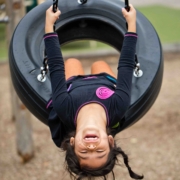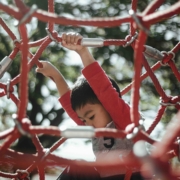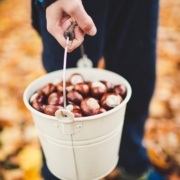Rethinking Recess: 7 Steps to Foster Engagement and Inclusion
Rethinking Recess: 7 Steps to Foster Engagement and Inclusion
Jody Matey
Teacher | Leader | Innovator
Recess is an area which can unintentionally be neglected by schools as teachers and administrators understandably prioritize setting up their indoor environments at the start of the year. While both research and feedback from educators tell us that it is an incredibly valuable learning space for children, recess is also potentially tricky for students who have social, sensory, or physical challenges. As we settle into a new term, many of the effects of the pandemic linger. I invite you to consider the following 7 ideas to reflect if your school has designed a positive and inclusive recess experience, or how you can shift your practices to better do so.
IDENTIFY COMMON AGREEMENTS AND SHARED UNDERSTANDINGS
Do you have established co-constructed agreements with teachers and families, and are they clear and transparent? If not, then set aside time as a staff to unpack what recess explicitly looks like at your school. As recess is a natural space where children have repeated opportunities to build greater awareness of their own bodies and test their physical limits, what are the shared understandings of the adults who support and supervise the playground?
Can recess time be reduced as a punishment or used to make up class work? According to one survey conducted by Wakefield Research of elementary school teachers in the US, 86 percent have at one time decreased or taken away recess time as punishment for behavior. Recent surveys conducted with student teachers and new teachers in extreme poverty schools (2011- 2014) found that taking away recess was widely used for punishment.
Are children free to experience the benefits of roughhousing or risky play? How are both defined in the context of your school? Are students confidently able to differentiate between a risk and a hazard?
Can the children play outside in all weather? Weather is often communicated using “good” or “bad,” terms; however, it is important to use neutral and descriptive language when describing the elements. Saying “It is rainy outside today; wear your rain jacket” is a factual statement versus a subjective comment such as, “It is terrible outside.” Many children love to play in the rain and snow! Wearing suitable outerwear not only provides protection from inclement weather, but also allows for additional opportunities to practice adaptive skills and experience rich sensory play.
EMPOWER THE CHILDREN
At a previous school where I worked, each class would visit the playground on the first day and subsequently hear a lengthy list of adult-generated rules. The children would be passively and politely sitting as their eyes excitedly darted around the space taking in all the options. They could barely contain themselves before being dismissed to explore. Teachers often include the children’s voices when creating classroom agreements, but how regularly are they included when planning recess? Why not ask the children for their thoughts? How do they want to feel and act when playing during recess? Post the children’s agreements outside so they are visible to anyone playing on or visiting the playground.
If repeated infractions occur, then reconnect as a class or grade level to discuss it together. Rather than a “don’t do this or that” authoritarian approach, consider sharing your observations with the children and seek their solutions. “I noticed that several children were climbing on the big swing at once. How can we solve this to keep it safe for everyone?” Yes, this takes time, but by empowering your students with frequent opportunities to solve their problems, the recess agreements will hold more authenticity and meaning to them.
INCLUDE SOCIAL EMOTIONAL SUPPORT
Do you have a first aid kit outside? Plasters for scrapes or cuts, to repair a child’s physical injuries? Then what are your steps to repair hurt feelings and support their social-emotional growth? You may see many children rushing to recess to engage in vigorous play, but if a child is struggling, they may first need or benefit from SEL strategies or visuals to better access the space. You may notice a child who regularly moves around the periphery of the playground and is unsure how to engage with the equipment or their peers. Or another who repeatedly engages in conflicts with their peers. Recess can be a stressful and overwhelming space for many children, and some may demonstrate “sensory overload.”
Healthy sensory integration refers to the appropriate processing, integration, and organization of sensory information from the body and the environment. If children need guidance recognizing or regulating their emotions, then perhaps accessible and clear visual recess interventions can help to ease their discomfort. You may want to collaborate with your school counselor to implement interventions that echo your school agreements. These can include diverse and inclusive books, social stories, or sensory fidgets in a designated ‘calm corner’ area. Your physical education teacher can also provide guidance to navigate competition and teamwork and may include games for recess as part of class instruction. Consistency between the indoor and outdoor spaces can help alleviate miscommunication between children, staff, and families.
ADD LOOSE PARTS
As a well-intentioned PE teacher, I have been guilty of viewing recess equipment as a space that only includes a variety of balls, jump ropes, and hula hoops. After several years of running outdoor programming with loose parts, I began to think about how they can be purposely integrated into a playground setting. Loose parts are open-ended materials that can be moved, adapted, redesigned, or constructed without a set of rules or instructions. Studies conducted with children up to the age of 12 have indicated that the ability to manipulate one’s own environment encourages not only creativity but the development of problem-solving abilities and improved social interactions between children.
Loose parts can provide fresh opportunities for agency, problem solving, and gross motor development. Although traditionally associated with those younger, in my experience older children can thrive when given the time and space to do so. You may consider dedicating one day a week or one recess to integrating loose parts and observing the results. A simple provocation of adding one loose part to a designated area can stimulate a new type of play. Ask the children what kinds of materials they would like or ask them to draw or paint pictures of their ideas and designs. Fortunately, loose parts can also be inexpensive and you might find success in reaching out to local businesses and/or families for gently used items. Lastly, if loose parts are not an option for your playground, then invite the children to use existing equipment in non-traditional, imaginative, and safe ways.
ROTATE EQUIPMENT
Why not take inspiration from the Montessori Method of toy rotation and change up the outdoor play options available to children on a regular basis? The frequency of rotation may vary for your population, but a good rule of thumb is to be observant of behavioral patterns in a particular area. Is there too much growing conflict on the football pitch? Perhaps temporarily switch out the soccer balls for a parachute, soft mats, or tennis balls. This move can stimulate creativity and excitement. Think of your storage options: How can you avoid cluttered, disorganized or broken equipment? Are there low shelves or labeled weatherproof bins in child-accessible areas? If using loose parts, these can look messy to a casual observer. Determine what your school’s agreements for either leaving out or cleaning up materials from one recess to the next.
TARGET SENSORY INPUT
You may often notice positive changes in students’ behavior upon their return to the classroom after recess. When children are given ample space to climb, jump, swing, spin, or run, this can have a substantial impact on their focus, attention, and self-regulation. The Journal of Pediatrics published a ground-breaking study of 11,000 third graders, comparing those who had little or no daily recess with those who had more than 15 minutes of recess per day. The findings show that children who have more recess time behave better in the classroom and are likely to learn more. (Barros, 2009) Often children repeatedly gravitate to a particular type of sensory play during recess.
Swinging, for example, provides vestibular input, which is defined as the sensation of any change in position, direction, or movement of the head. Commonly used by occupational therapists, it provides calming, organizing, and regulating signals to the nervous system. Often just 15 minutes of vestibular input can have a 1–2-hour positive effect on the body and brain. Proprioception or “heavy work” is also a tool to support the nervous system. These activities involve the muscles pushing, pulling, or lifting of weighted materials. A child seeking proprioceptive input might be prone to do so in ways that are not always safe, such as crashing into peers or jumping from inappropriate heights. However, what may be interpreted as poor behavior by adults may simply be a child seeking sensory feedback. Does your outdoor space provide a range of sensory opportunities for children that are both stimulating and calming? Are there areas where children can be barefoot or enjoy tactile input like sand or water? Are there quiet spaces where children can retreat from visual and auditory stimuli?
PROMOTE UNSTRUCTURED PLAY FOR ALL AGES
Beyond recess, do your students regularly have access to unstructured play time? The average length of recess worldwide is 25 minutes, but the reality is that it can often take more time than this for children to connect with their peers and settle into their play. Studies done by the University of Michigan’s Survey Research Center show that since the 1970s, children in the United States have lost about 12 hours per week in free time, including a 25 percent decrease in play and a 50 percent decrease in unstructured outdoor activities. During the pandemic, children around the world spent 20% less time taking part in physical activity, according to a recent JAMA pediatrics study. Are there opportunities for unstructured play for your class during the school day? When I started adding occasional unstructured play into my physical education classes, I noticed the children gravitate to what they needed to self-regulate. It equally highlighted their areas of strength and growth, and gave me further evidence of their interpersonal skills. Some classes would demonstrate more creativity and stamina, while others would struggle with collaboration and communication. This allowed me to adjust and differentiate my lesson content to address their specific social-emotional, cognitive, and physical needs.
Developmental psychologist and author of ‘Free to Learn,’ Dr. Peter Gray writes extensively about how child-led, self-directed play can be a powerful antidote to the anxiety and depression that many children experienced during the pandemic. Unfortunately, opportunities for play are often affected by school size, location, region, minority enrollment, and eligibility for free and reduced-price lunch. On average, children attending private schools have 30 minutes more recess a week than children attending public school. Countries such as Finland, Turkey, Japan, and the Republic of Korea reportedly provide 10-to-15-minute breaks every hour and have between 6 and 8 breaks in a school day. Other countries, such as Sweden, England and Wales, Switzerland, Australia, and the Netherlands, offer longer but less frequent periods. Unfortunately, as of publication date, there is little comparative international data on recess.
In closing, consider the intentionality of how you design recess at your school. Does it provide an appropriate amount of stimulation and challenges for children? Can it meet their social-emotional, physical, and cognitive needs? Are they actively engaged, safe, responsible, and kind? As schools move to implement programming that is responsive to the pandemic’s losses, consider what changes can be made to foster a more authentic and rewarding recess experience for all children.
ABOUT THE AUTHOR
Jody Matey is an experienced international physical educator and passionate advocate for inclusive, meaningful movement for children. Social-emotional literacy and sensory integration are at the heart of her work. She earned her Master’s Degree in Adapted Physical Education from the University of Virginia and is a Primary PE teacher at the Frankfurt International School in Germany.
“To me, movement is a critical component of developing the whole child. I have been fortunate to spend the last 25 years creating positive and joyful learning experiences for children. Working alongside families and other educators has provided me the opportunity to foster my passion and purpose.
My teaching is both creative & child-centered while nurturing agency, inquiry and reflection. I strive to cultivate an environment that is respectful of differences in skill, gender, race and culture while being responsive to the changing needs of children. Both personally and professionally, I am someone who continues to reflect, adapt, change and grow. If you would like to know more about how to best support your child’s physical literacy, please reach out!”
www.jodymatey.com
REFERENCES
Ayres, A. J., & Robbins, J. (2005). Sensory integration and the child: Understanding hidden sensory challenges. Los Angeles, CA: Western Psychological Services.
Baines, E.,Blatchford, P & Golding, K., (2020). Recess, Breaktimes, and Supervision. In S. Hupp & J. Jewel (Series Eds) & P.K. Smith (Volume Ed). The Encyclopedia of Child and Adolescent Development Part 1 (Child): (Volume 6 – Community). New York: Wiley-Blackwell.
Clay, Rebecca A. The Serious Business of Play. American Psychological Association. May 11, 2020.
Changes in Child and Adolescent Physical Activity During the COVID-19 Pandemic: A Systematic Review and Meta-analysis. JAMA Pediatric. 2022 Jul 11: e222313. doi: 10.1001/jamapediatrics.2022.2313. Epub ahead of print. PMID: 35816330; PMCID: PMC9274449
A Collaboration between Nature Play South Australia and the Department for Education (2018). The Power of Loose Parts Play.
Gray, P. (January 2011). The Decline of Play and the Rise of Psychopathology in Children and Adolescents. American Journal of Play.
Jarrett, Olga S. (2019). A Research-Based Case for Recess: Position Paper
2018 Survey on Recess. Voice of Play. Harrisburg, PA. 2018.
Sando, O.J., Kleppe, R. & Sandseter, E.B.H. (2021). Risky Play and Children’s Well-Being, Involvement and Physical Activity. Child Ind Res 14, 1435–1451









Trackbacks & Pingbacks
[…] Source link […]
Leave a Reply
Want to join the discussion?Feel free to contribute!